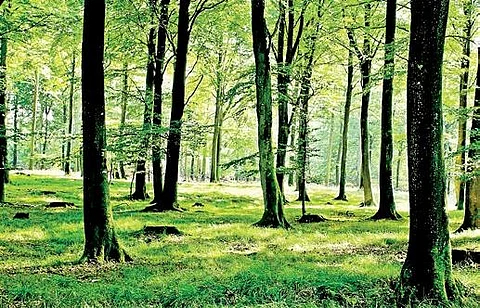

RAMANATHAPURAM: The shelter belt of trees along the Ramanathapuram coast, prominent for its role in preserving soil and saving the inland from offshore winds, is facing many hurdles, including human intervention. In the upcoming year, the forest department has planned to plant around 5.5 lakh saplings in the district and along the shelter belt areas with the intention of increasing the green cover.
The shelter belt consists of multiple rows of trees that are sometimes naturally or artificially planted along the coastline. These shelter belts help in redirecting the offshore winds which can potentially wreak havoc on the inland, by 50%-60%. These tightly planted rows of trees on the shoreline also play a major role in preventing coastal sea erosion in the coastal district of Ramanathapura. These trees also benefit the environment and many bird species.
According to the forest department, Ramanathapuram has a total of 3150 hectares of shelter belt in the coastal areas in which more than 450 hectares of area is casuarina tree and the rest are other native trees. Holding such importance, these shelterbelts in the district face issues including human intervention and other causes. Recently in June last week, the forest department arrested an individual near the Thondi area for allegedly felling more than 125 Casuarina trees. The accused person was booked under the wildlife act and was penalised with a fine of 3.3 lakhs.
Speaking to TNIE, S Hemalatha, district forest officer, Ramanathapuram said these shelterbelts of trees on the coastline are beneficial for the environment internally and externally. "The casuarina trees especially, increase the levels of Nitrogen in the soil, which benefit the farmers in cultivation besides preventing offshore winds. These shelterbelts are spread across both government land and reserve forest areas in the district. In some areas, these trees face the threat of being felled by people. However, we are creating awareness among the people about the importance of these trees," she added.
The DFO further said the forest department has planned to plant more than 5.5 lakh trees during 2023-2024, to strengthen the shelter belt. "While we intend to plant casuarina trees and other native trees, the department will also be planting about 20,000 palmyra trees (50% seedlings and 50% saplings), which can assist in maintaining the groundwater table. All the saplings are currently being maintained by the nurseries under the forest department. Once the monsoon season commences, the tree plantation will begin as the weather would be favourable for the saplings," she added.
Meanwhile, the local farmers stated that while the excessive sea winds could spoil their crops besides salination making things worse for cultivation, these trees would stand as a guard to prevent the strong winds, and to improve soil tilth and fertility.